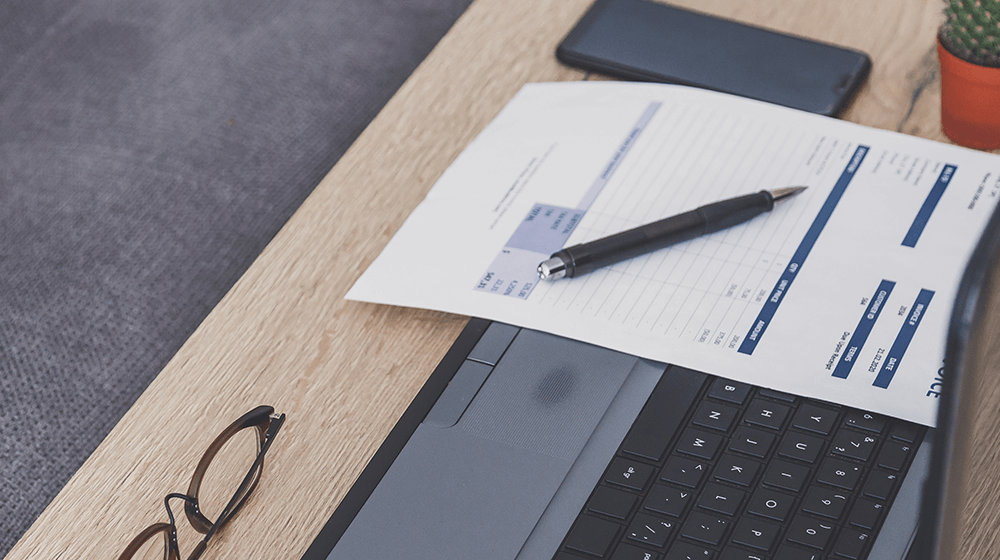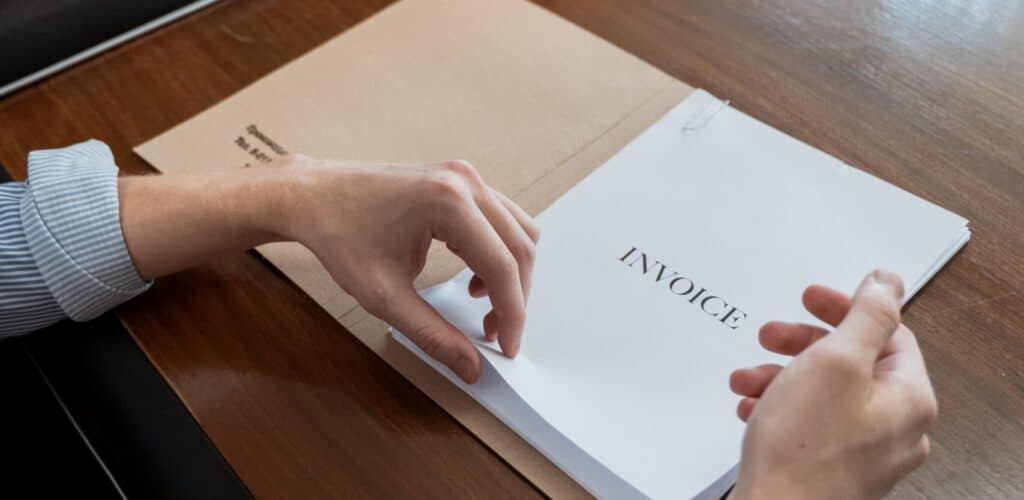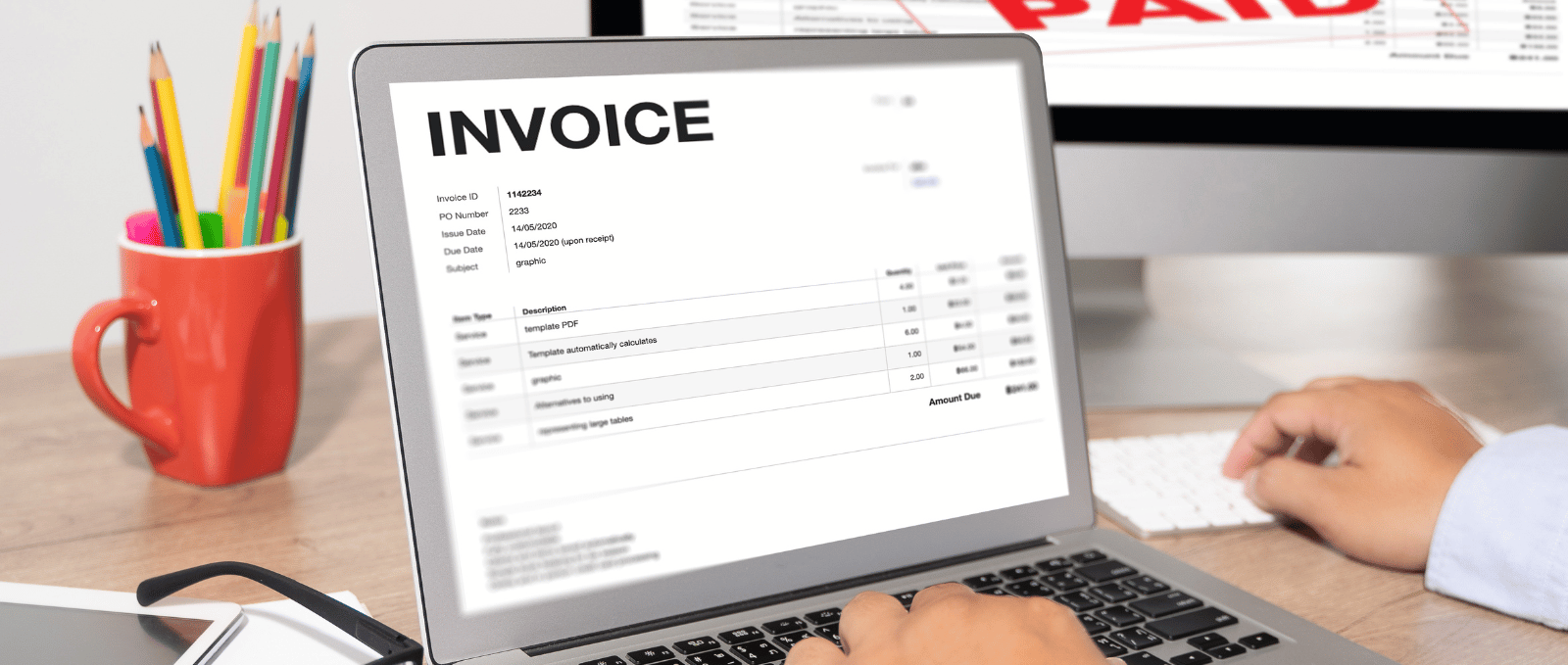Recently, freelancers and small business owners have turned to email invoice due to their convenience.
While some may question whether sending customers invoices by email is professional, it’s the most time- and labor-efficient method to collect money for many businesses.
In this post, we will review some of the concerns about email invoices and highlight best practices.
Should You Write an Email Invoice?
Yes, you can write an email invoice. Sending an email invoice has become a popular and convenient method for many businesses.
An email invoice typically contains the same information as a paper invoice, including the date, invoice number, item description, quantity, unit price, total amount, and payment terms.
However, ensuring your email invoice is clear, professional, and easy to understand is important.
You should also include all the details your client needs to make a payment, such as payment options and due dates.
Why use an Email Invoice Template?
The simple answer is that email invoice templates save you time as you won’t have to compose the same message every time you send an invoice.
This idea is particularly helpful because it provides many goods and services. If you need to send out invoices to several clients, an email template is a great way to ensure everyone gets the same information.
Invoice templates also allow you to customize your correspondence with each customer by including specifics about their account, such as their name and address.
How to Create an Email Invoice Using an Email Invoice Template.
When designing an email invoice template, it must reflect your brand identity. Your email should also convey the nature of your business and your rapport with your customers.
Nonetheless, your email invoice template should be broad enough to accommodate all of your customers, with only a few tweaks here and there before you hit the send button.
The instructions below will help you create a polished draft:
1. Maintain a Professional Tone
When it comes to email invoice, business owners sometimes need help. They fret about whether or not an invoice is professional enough if it contains the right information.
The point of sending an invoice through email is to be paid, but you want your customer to be more than eager to pay.
Furthermore, you want them to value their business decision in working with you. Therefore, use clear and concise language and avoid acronyms and jargon.
2. Use Detailed Subject Lines
You should highlight the most crucial details in an email invoice in the subject line.
You want the customer to view your message and immediately understand that you are sending them an invoice by looking at the subject line.
If you remind them that you’ve issued an invoice, they can remember it and pay on time. The subject line of your mail should include the invoice number and the due date.
3. Provide a detailed breakdown of the invoice.
Remember to include a detailed breakdown of the services or products provided, the cost per item, the total amount due, and any applicable taxes or discounts.
4. Specify payment terms
Clearly state the payment terms, including the due date and any penalties for late payments.
Also, provide your clients with multiple payment options, such as credit cards, bank transfers, or online payment platforms, to make it easy for them to pay.
5. Attach the invoice
If you don’t write directly in the email, attach a copy of the invoice to the email as a PDF file, ensuring it is clearly labeled.
6. Proofread and double-check
Before sending the email, proofread it carefully to avoid typos or errors. Double-check that all the information is accurate, especially the client’s name and payment amount.
7. Follow up politely
If you have yet to receive a payment or have to deal with overdue invoice, send a polite follow-up email to remind the client of the outstanding payment. Be sure to address the event rather than the person.
What should I include in my Email Invoice?
When writing an Email invoice, you must include all necessary information to ensure your client understands the transaction details. Here is a checklist of items to include in your email invoice:
- Company Information: your invoice is complete with your business name, address, phone number, and email address. This information helps your client to identify the invoice and contact you if they have any questions or concerns.
- Invoice Number: assign a unique invoice number to each invoice you send. The number helps you and your client track the transaction and ensures that payments are applied to the correct invoice.
- Invoice Date: include the date that the invoice was created. The date helps to keep track of the payment timeline.
- Client Information: client information helps clients identify the invoice and understand why and who pays for what.
- Description of Services: a description of the products or services provided includes specific and clear details about what was provided and how much was provided. This information will help your client understand the charges on the invoice.
- Quantity and Rate: itemize the number of products or services provided and the Rate for each item. Then, multiply the quantity by the Rate to obtain the total cost.
- Total Amount Due: include the full amount at the bottom of the invoice. Be sure to include any taxes or additional fees that may apply. You must also state your pricing, specifying whether you bill by the hour or the project.
- Payment Instructions: provide clear instructions on how your client can make payment, including payment methods, due dates, and any late payment fees.
- Terms and Conditions: include additional terms and conditions that apply to the transaction, such as refunds, cancellations, or warranties. Or remind them if you have an existing arrangement.
Conclusion
An essential part of running a company is sending out invoices. Incorrect wording or presentation might lead to customer confusion and annoyance since the recipient may need to learn how to reply to your request for money.
A positive working relationship with your customer begins with a well-written email.













